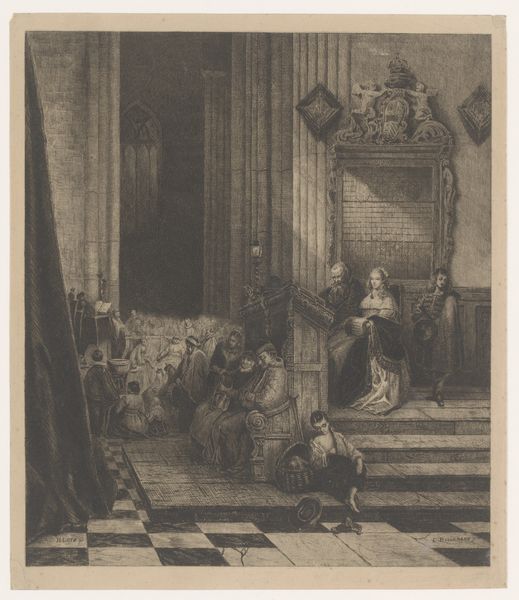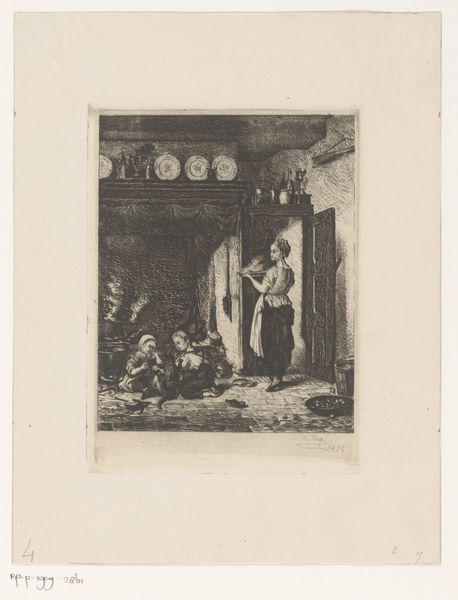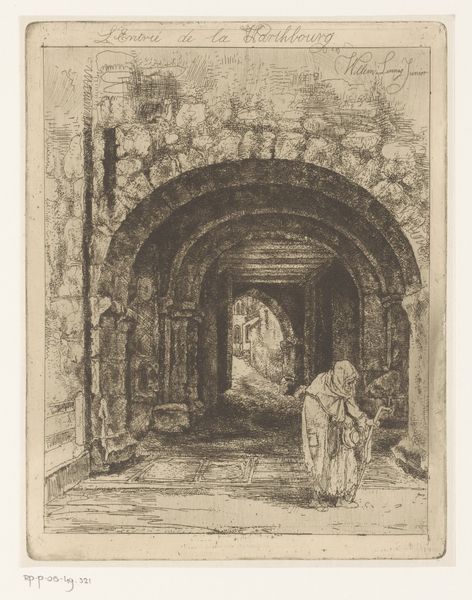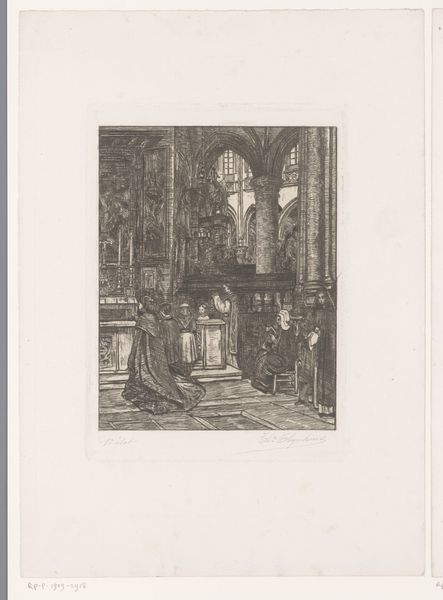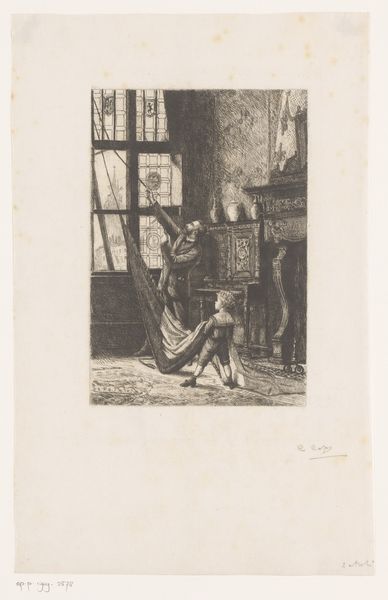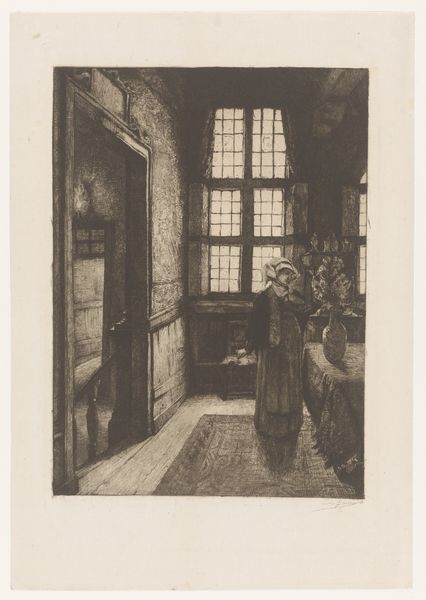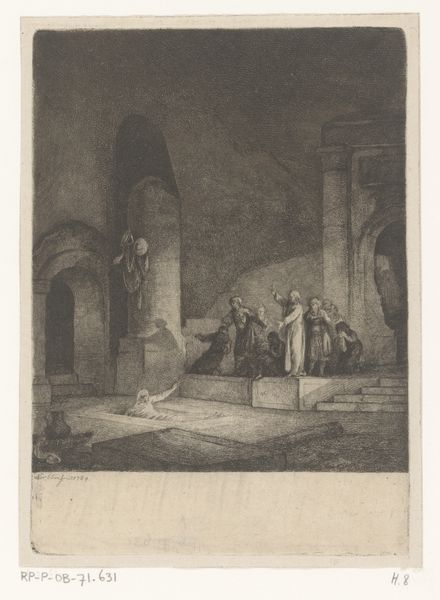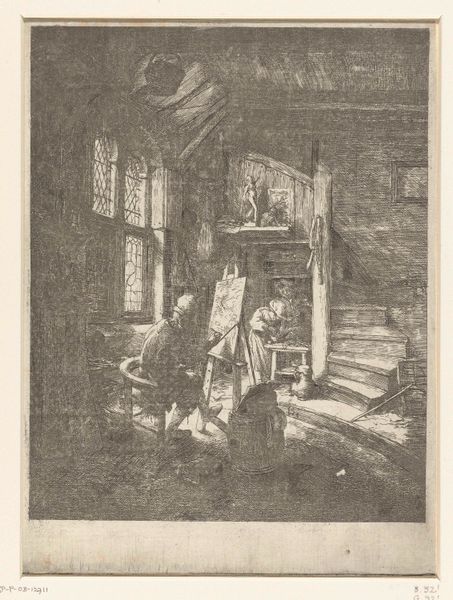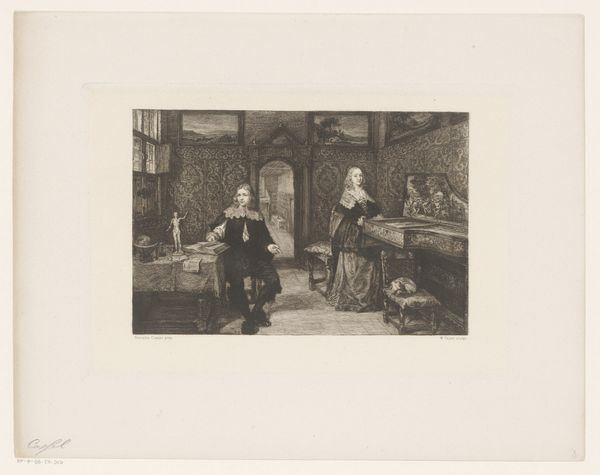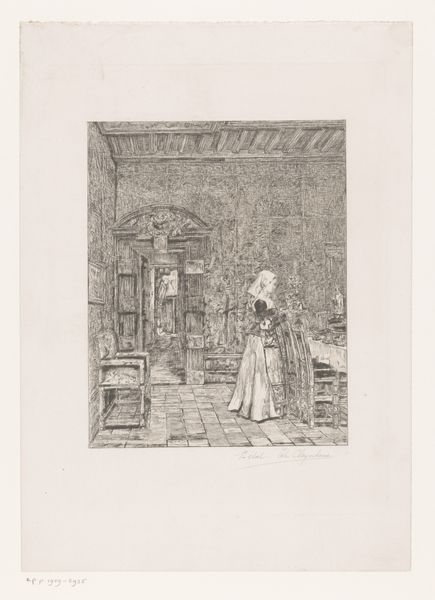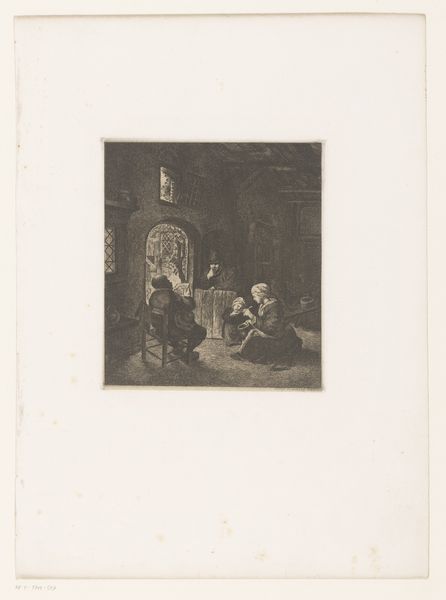
Drie mannen en een hond in de schepenzaal in het stadhuis van Oudenaarde 1825 - 1863
0:00
0:00
guillaumejosephvertommen
Rijksmuseum
drawing, print, etching
#
drawing
# print
#
etching
#
dog
#
landscape
#
figuration
#
romanticism
#
genre-painting
#
realism
Dimensions: height 377 mm, width 296 mm
Copyright: Rijks Museum: Open Domain
Editor: Here we have Guillaume Joseph Vertommen’s “Three Men and a Dog in the Ships Room in the Town Hall of Oudenaarde," an etching from somewhere between 1825 and 1863, housed at the Rijksmuseum. It has a surprisingly intimate feel despite depicting what seems like a formal transaction or meeting. What stands out to you in terms of the historical or social context depicted here? Curator: What I find compelling is the seemingly candid snapshot of civic life. We see this almost staged authenticity played out through art within a historical framework of civic imagery and what function that imagery played. Consider the composition—the dog, almost as an accidental observer, breaks down some of the self-importance of such a space. Who was this made for, and how might it have been perceived? Editor: I hadn’t thought about the role of the dog that way. It almost feels like a visual joke, disrupting the formality. Do you think the print’s realism challenges established notions of historical painting? Curator: Precisely! This etching reflects the changing dynamics between public art, private life and social status during the Romantic and Realist movements. Etchings allowed for wider distribution and consumption, altering the accessibility and purpose of art, particularly of genre paintings, influencing the formation of public identity through circulated images. Did this newfound accessibility change who felt represented, and did it actually make room for marginalized people and opinions to become represented and be heard? Editor: So, by depicting a ‘slice of life’ moment in a town hall, Vertommen democratized a space that was normally associated with power and exclusivity? The dog adds a sense of humor, subtly questioning authority through accessible art. Curator: Absolutely, the very act of etching and its distribution becomes a statement about access and the politics of imagery, echoing shifts in social and political ideologies. Think about the broader implications on the role of art in society. Editor: That's really insightful. I’m now seeing this seemingly simple scene as a commentary on civic life and accessibility. Curator: Exactly, it shows the subtle yet impactful ways art reflects and shapes societal values.
Comments
No comments
Be the first to comment and join the conversation on the ultimate creative platform.
